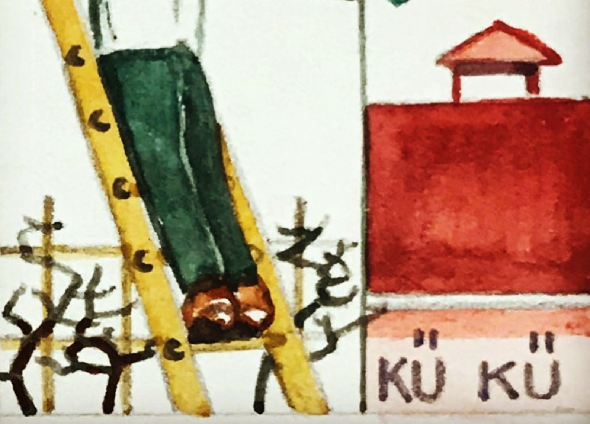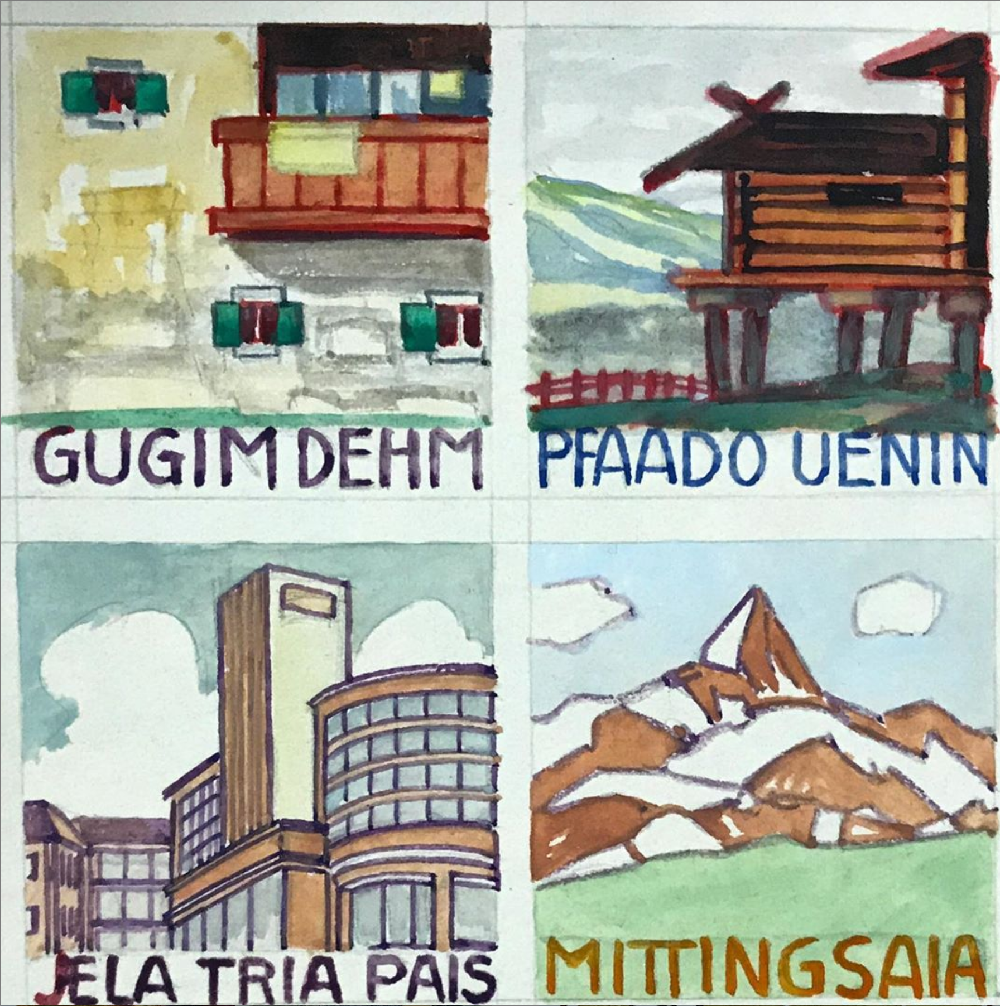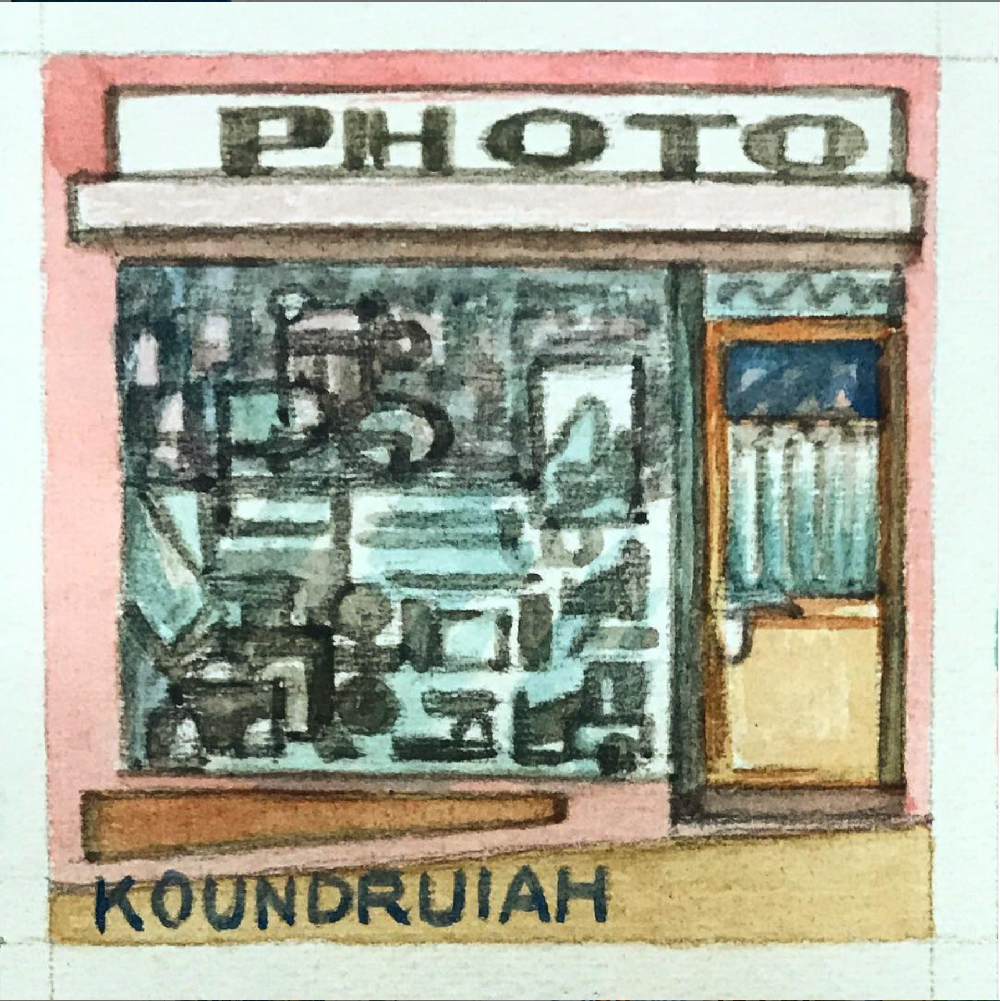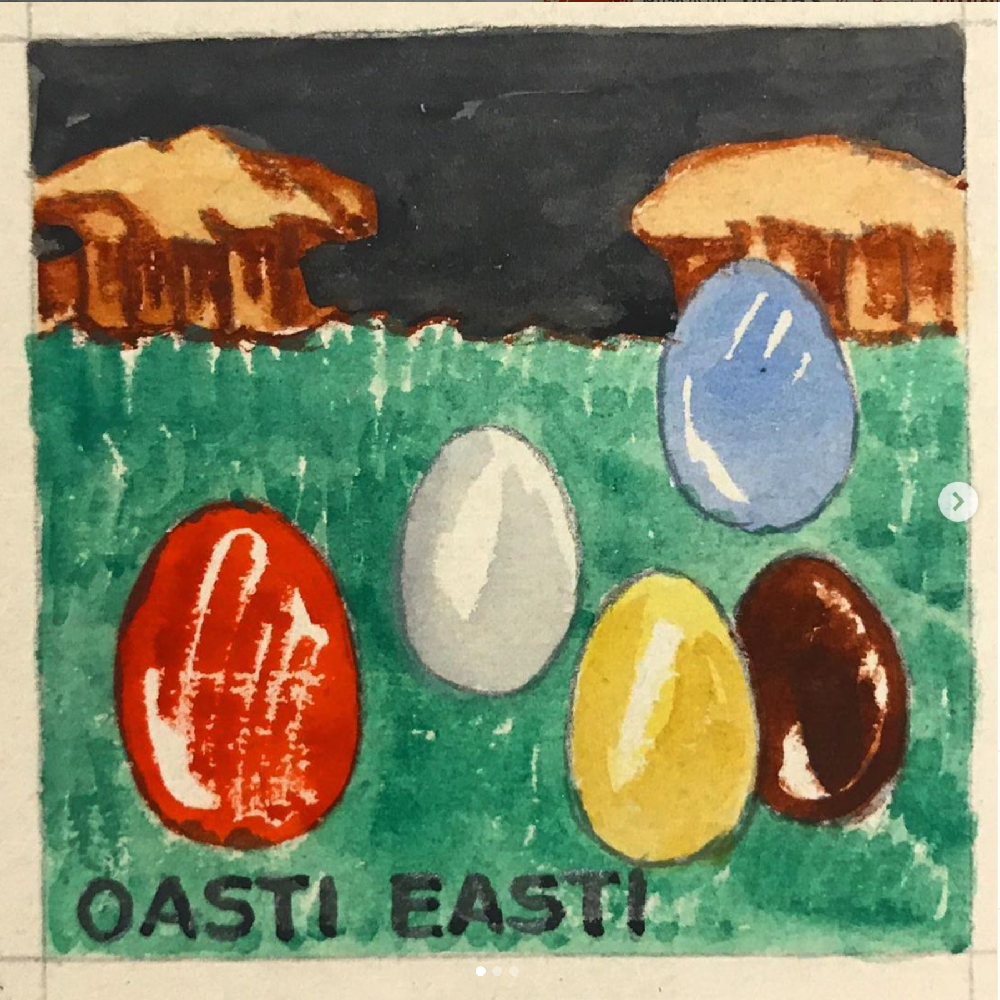This might be the cryptogram discovery of the year: a manuscript containing some 7000 illustrations, many of them with encrypted (?) captions. Can a reader make sense of these unusual artworks?
Prof. Robert Goulding from the University of Notre Dame has made me aware of a crypto mystery hitherto unknown to the codebreaking community. A friend of Robert’s, rare book dealer Heather O’Donnell of Honey & Wax Bookseller in Brooklyn, has come into possession of a very strange manuscript, titled Europa Redux. It was made from 1940-46, apparently in Switzerland. It is not known who the creator was, where exactly the manuscript was produced, and what it was made for.
The manuscript
The Europa Redux Manuscript contains of some 7,000 illustrations, about 3×3 centimeter in size, many of which are captioned in what appears to be a strange language. Every one of the 7,000 drawings represents a well composed artwork.
A selection of illustrations from the Europa Redux Manuscript is available on Instagram. The manuscript was recently exhibited at a New York book fair, as can be read in a report published by The Magazines Antiques. In this article, we read: “The faultless compositional strategies employed by the artist, taken together with the fact that early panels are clearly copies of European tourist brochures, would seem to indicate the hand of either a professional illustrator or a copyist.”
Encrypted words?
For this blog, of course, the captions in the Europa Redux Manuscript are the most interesting part. They appear to be a complete mystery. The captions that can be seen on Instagram mostly consist of one to three words. All these words, such as ENVERAD or WORNDÄH, have no meaning in any language spoken in Switzerland, but are pronouncable. This means that we are not dealing with an ordinary letter substitution (MASC), polyaphabetic cipher or digraph subtitution. A transposition cipher based on a fixed set of rules isn’t possible, either.
It seems possible, however, that each caption word was derived from a meaningful expression by anagramming, i.e., by transposing its letters in an arbitrary way. The website Anagramme Expert provides a tool that searches for anagrams of a given set of letters. As a first test, I entered the word KOUNDRUIHA, which can be seen in the following illustration. To my disappointment, Anagramme Expert didn’t find a meaningful word consisting of the same letters.
The anagram hypothesis is discussed on Instagram, too, but apparently none of the captions can be derived from meaningful words just by changing the order of the letters. This is also the case for the expression TRADI MEO, which can be read in the following picture:
Some have suggested that the strange words in the Europa Redux Manuscript are taken from children’s language. At least for the following picture, this is plausible:
OASTI EASTI could be the little children’s version of “Osterei” (“easter egg”).
And then, there is, of course, also the possibility that all these captions have no meaning at all. In my view, this is even the most likely explanation. However, such a hypothesis is hard, if not impossible to prove.
I have put the Europa Redux Manuscript on my encrypted book list (ID 00102). Can a reader say more about it? Both information about the captions and about the origin of the book would be highly appreciated.
Follow @KlausSchmeh
Further reading: Alster bottle post mystery: Two more bottle posts found
Linkedin: https://www.linkedin.com/groups/13501820
Facebook: https://www.facebook.com/groups/763282653806483/








Kommentare (10)